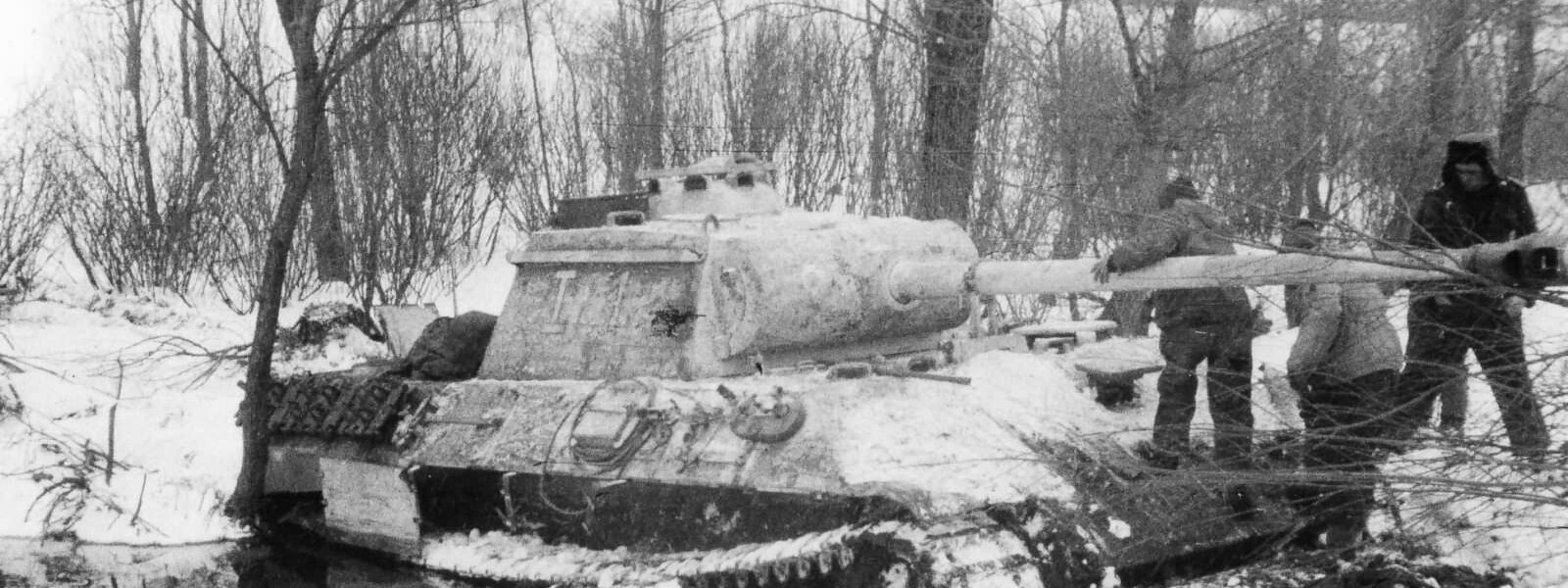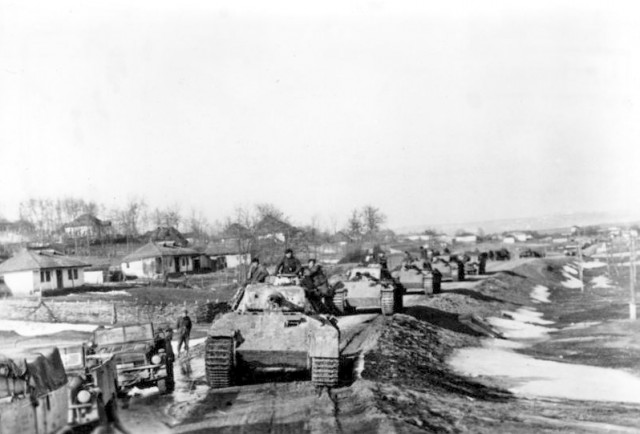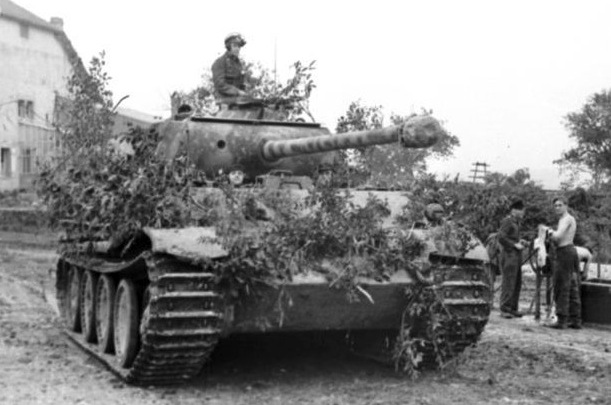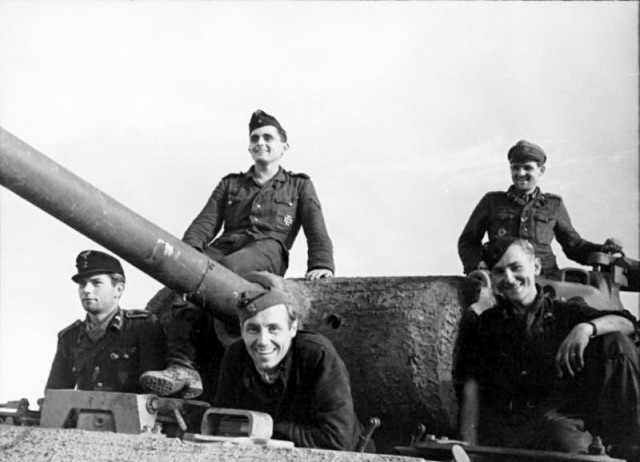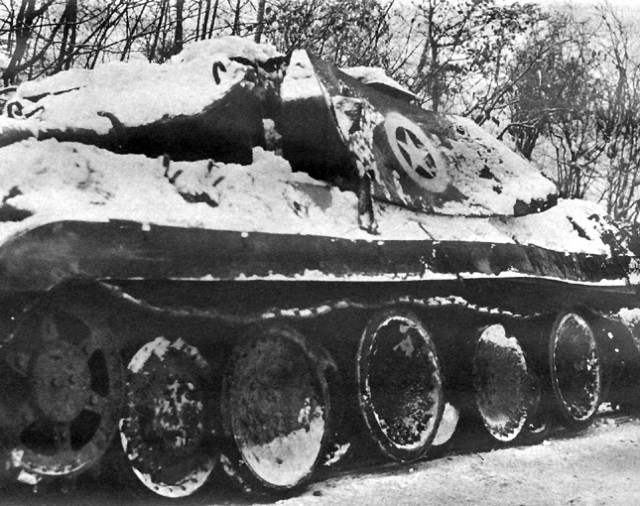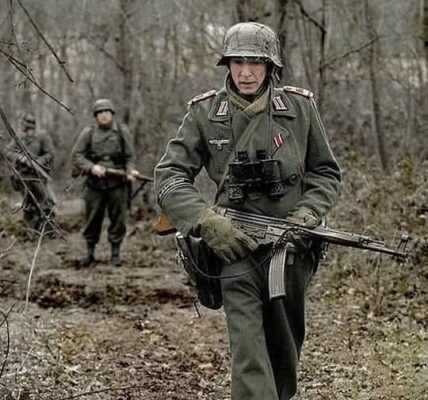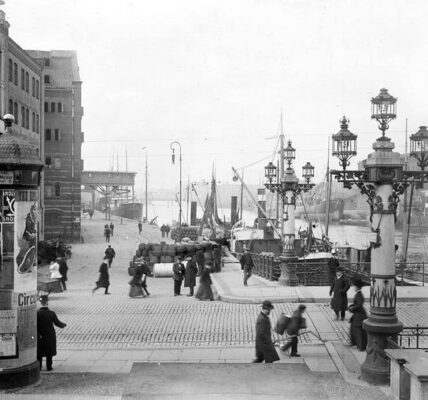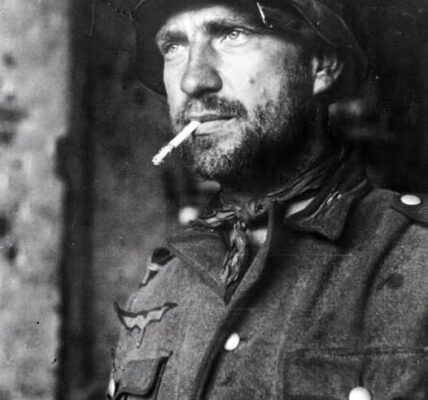1) Over 6000 Panthers were built by the Germans but more surprisingly, nine were built by the British Army in 1945-1946.
2) The full name was the Panzerkampfwagen V Panther and it had the ordnance inventory designation of Sd.Kfz. 171. But on 27 February 1944, Hitler ordered that the Roman numeral “V” be deleted from the designation.
3) The Panther was the third most-produced German armoured fighting vehicle, after the Sturmgeschütz III assault gun/tank destroyer at 9,408 units, and the Panzer IV tank at 8,298 units.
4) There were three main versions of the Panther, versions D, A and G, each new version incorporating significant improvements. There were also the artillery spotter, recovery and commander versions.
5) The tank was designed to weigh 30 tons but Hitler demanded extra armor and a heavier gun and so it ended up weighing almost 50 tons.
6) The later models had a top speed of 46km/h, roughly as fast as the Tiger and slightly faster than the Sherman tank.
7) The Panther tank uses the same engine very similar as that used in the Tiger Tank, it had an average life of 1500 hours.
8) On a full tank of 720 liters (190 gallons) a Panther could drive between 97 and 130 km on the road or 64 to 84 km cross country. On comparison, a Sherman Tank could drive up to 193 km on 660 liters of fuel.
9) The Panther tank came in service AFTER the Tiger tank, the Panther being first used in combat in July 1943 in Kursk whereas the Tiger was first used in Leningrad in December 1942.
10) Hitler ordered a Panther II which would feature more armor yet the same gun, one prototype of which was captured by the Americans. The project was quietly cancelled in mid-1943.
11) The Panther II project did lead to the Jagdpanther, the Panzerjäger V Panther of which 418 were built during the war, which used the famous 88mm gun.”
12) Panther tanks were used by the Russians until they broke down, being too complicated and thus difficult to repair.
13) The French army used over 50 Panther tanks from 1945 until 1950 in their 503e Régiment de Chars de Combat.
14) The Panther had a 7.5 cm main gun could carry 40 rounds of anti-tank ammo and 39 high explosive shells. It also had two MG 34 machine guns with 5100 rounds of ammunition.
15) The Panther had a crew of 5; commander, driver, gunner, loader, radioman/machine gunner.
16) From 1943, Panther turrets were mounted in fixed fortifications; some were normal production models, but most were made specifically for the task, with additional roof armour to withstand artillery fire.
17) When 184 Panthers were first deployed during the battle for Kursk they claimed 267 destroyed tanks, but after five days of fighting, there were only 10 Panthers left on the front line.
18) At their peak on September 1944 there were 552 Panthers operational on the Eastern front out of a total of 728.
19) The last operational report dated March 15, 1945, lists 361 operational out of 740 Panther tanks.
20) At least two Panthers were captured by the Polish resistance in the early days of the Warshaw uprising, they were immobilized after several days due to lack of fuel and batteries and were set on fire.
21) During the Battle of the Bulge, the Germans used 400 Panther Tanks, five of which were disguised to look like American M10 Tank Destroyers by welding on additional plates, applying US-style camouflage paint and markings.
22) After the Battle of the Bulge and because of the Panther Tanks only 76 mm gun-armed M4 Shermans were shipped to Europe for the remainder of the war.
23) In February 1945, eight Panzer divisions with a total of 271 Panthers were transferred from the West to the Eastern Front. Only five Panther battalions remained in the west.
24) One of the top German Panther commanders was SS-Oberscharführer Ernst Barkmann of the 2nd SS-Panzer Regiment “Das Reich”. By the end of the war, he had some 80 tank kills claimed.
25) There are thought to be five surviving Panthers in running order, two of which were built by the British Army. There are a lot more non-runner Panthers out there in museums, as monuments or in the hands of private collectors.
